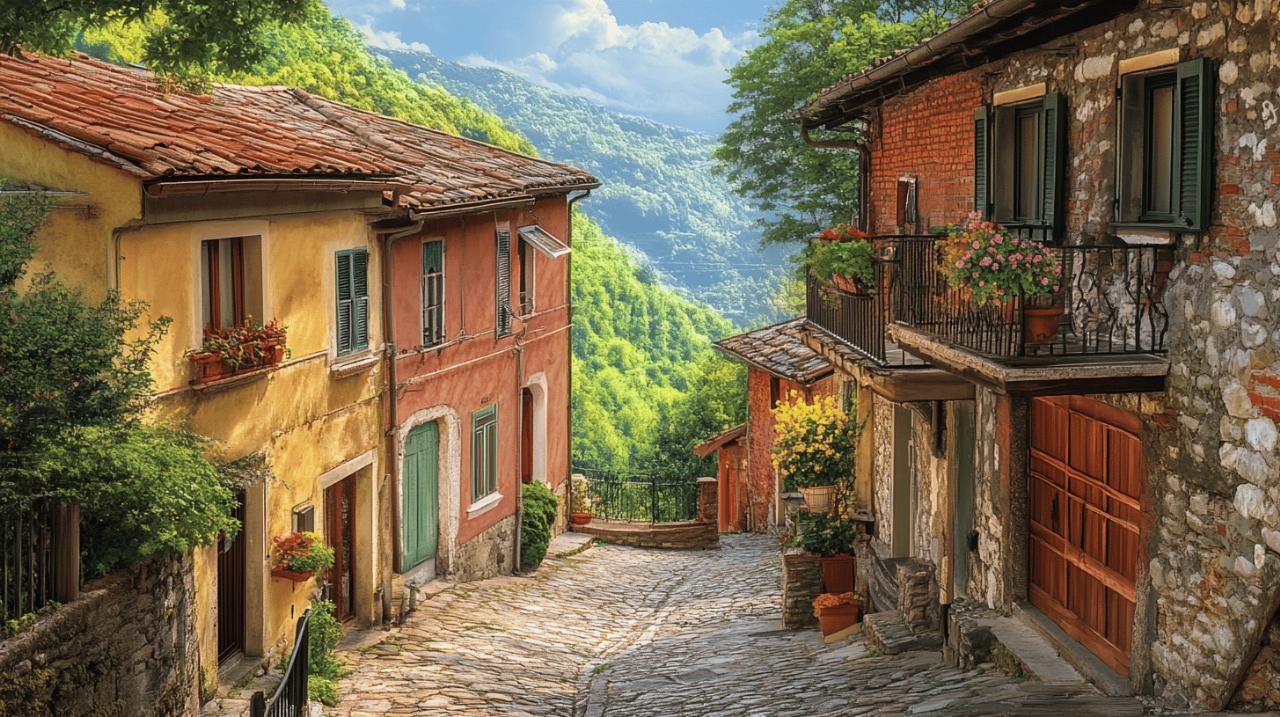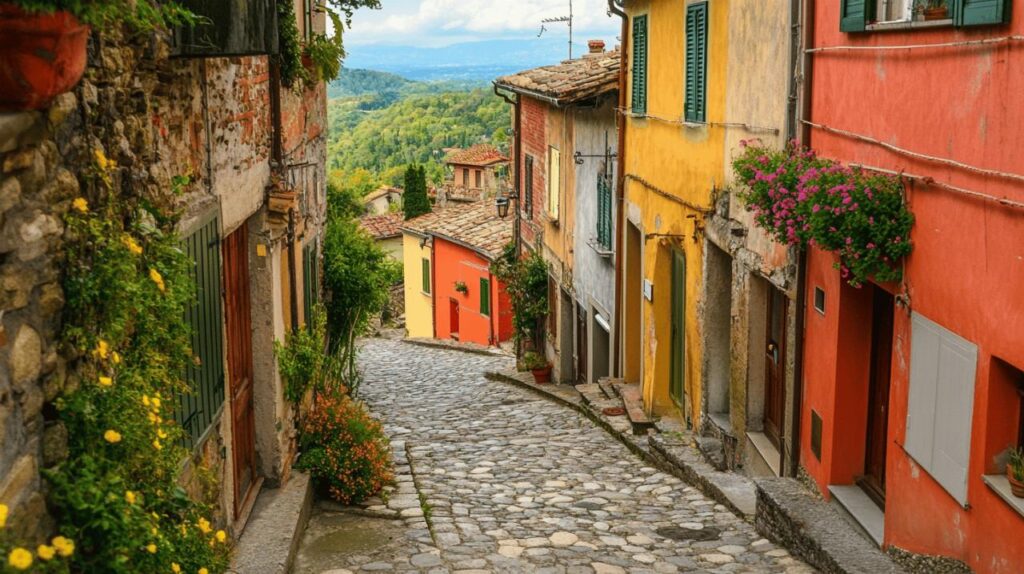The dream of owning a property in picturesque Italy has become increasingly attainable through an innovative scheme that has captured the imagination of prospective homeowners worldwide. For those seeking an extraordinary property investment opportunity, the €1 house scheme presents a tantalising proposition that combines affordability with the charm of historic Italian villages. This unique initiative has gained significant traction since its inception, offering a pathway to property ownership that seems almost too good to be true at first glance.
Understanding the €1 House Scheme in Italy
The €1 house scheme, which began in 2017 according to Domus Agency, represents a creative solution to the challenge of rural depopulation in Italy. This innovative programme emerged as a response to the mass exodus that occurred primarily during the late 1800s and early 1900s when many Italians migrated to America in search of better opportunities, leaving their properties behind. The abandoned homes, particularly prevalent in southern Italy, have stood empty for decades, some for over a century, gradually falling into disrepair and creating what have become known as 'ghost towns'.
At its core, the scheme aims to breathe new life into these declining communities by attracting new residents who will commit to renovating the properties and potentially establishing themselves as part of the local community. This revitalisation effort serves multiple purposes: preserving architectural heritage, stimulating local economies, and rekindling community spirit in areas that have experienced significant population decline over generations.
The origins and purpose of the programme
The initiative, officially known as 'Casaauneuro' or 'Houses for One Euro', was conceptualised as a direct response to the critical issues facing many Italian villages. With younger generations increasingly drawn to urban centres for employment and lifestyle opportunities, rural communities have faced dwindling populations, ageing residents, and diminishing economic prospects. The scheme was first implemented in 2008 in Salemi, Sicily, and has since evolved into a nationwide strategy for community regeneration.
The fundamental purpose extends beyond merely selling properties; it represents a comprehensive approach to community revitalisation. By attracting new residents, including foreign buyers, these villages aim to stimulate local businesses, create employment opportunities, and preserve their cultural identity. The symbolic €1 price tag serves as an attention-grabbing mechanism to highlight these opportunities to a global audience, while the renovation requirements ensure genuine commitment to community regeneration.
Regions and villages participating in the initiative
What began as a localised effort has blossomed into a widespread movement encompassing approximately 60 towns and villages across Italy. While the scheme initially concentrated in southern regions like Sicily, Sardinia, Calabria, Puglia, Molise, Basilicata, and Abruzzo, it has gradually expanded northward to include areas in Piedmont, Liguria, and Tuscany. Most recently, plans have been announced to extend the programme to Northern Italy in 2025, with more than 30 municipalities in Trentino preparing to offer financial incentives to attract new residents.
Each participating locality manages its own programme independently, meaning there is no centralised database for these properties. Prospective buyers must research individual town websites, typically under their 'Comune' section, to discover available properties. Notable success stories include Mussomeli in Sicily, which has attracted significant international interest and witnessed tangible economic revival as a result of the scheme. Other locations like Penne in Abruzzo have gained popularity for their favourable terms, requiring no security deposit and offering relatively affordable renovation possibilities starting around €20,000 for small to medium-sized properties.
The reality behind the €1 price tag
 While the headline-grabbing €1 price creates immediate appeal, understanding the full financial commitment is essential for anyone considering this unique property opportunity. The nominal purchase price represents merely the starting point of what typically becomes a substantial investment. Prospective buyers should approach these opportunities with eyes wide open regarding the true costs and obligations that accompany these historic properties.
While the headline-grabbing €1 price creates immediate appeal, understanding the full financial commitment is essential for anyone considering this unique property opportunity. The nominal purchase price represents merely the starting point of what typically becomes a substantial investment. Prospective buyers should approach these opportunities with eyes wide open regarding the true costs and obligations that accompany these historic properties.
Hidden costs and renovation requirements
The actual financial outlay extends well beyond the symbolic €1 acquisition fee. Buyers must typically budget for notary and legal fees ranging from €2,000 to €3,000, which are standard components of Italian property transactions. Many municipalities require a security deposit between €2,000 and €5,000, refundable upon completion of the mandated renovations within the specified timeframe.
The most significant expense, however, comes in the form of renovation costs. Most €1 houses are in advanced states of disrepair, often requiring comprehensive structural work including new roofs, ceilings, walls, and floors. Depending on the property's condition, size, and location, renovation expenses can range dramatically from €20,000 for minor refurbishments to upwards of €200,000 or even €300,000 for complete restorations. Some buyers have reported unexpected structural issues that substantially increased their initial budget estimates. Working with local contractors can help mitigate costs, though foreigners should be cautious about potential price inflation and may benefit from having a trusted local intermediary assist with negotiations.
Legal obligations and time constraints
The purchase of a €1 house comes with stringent legal requirements designed to ensure buyers follow through on their commitment to renovation. Most municipalities stipulate that renovation plans must be submitted within two to three months of purchase, with work typically required to be completed within three to five years. Failure to meet these deadlines may result in forfeiture of the security deposit and potentially the property itself.
Some towns also impose residency requirements, mandating that buyers live in the property for a minimum period, usually between three and five years. This condition aims to prevent speculation and ensure that the programme achieves its goal of community revitalisation rather than simply transferring ownership of neglected properties. Additionally, foreign buyers must navigate Italian bureaucracy to obtain a 'codice fiscale' (tax identification number) and must be aware of both Italian property taxes and their home country's requirements for foreign property ownership. American buyers, for instance, face additional reporting obligations such as FBAR filing if their Italian bank accounts exceed $10,000.
Despite these challenges, the scheme offers unique benefits for the right candidates. Retirees, remote workers, and Italophiles seeking an authentic connection to Italian culture often find the most satisfaction in these projects. Beyond the romance of owning a piece of Italian heritage, the programme can provide geographic diversification of assets, a potential pathway to residency, and the satisfaction of contributing to the preservation of historic communities. For those with the time, financial resources, and determination to see the project through, a €1 house can transform from a crumbling ruin into a cherished home in one of Italy's most beautiful regions.





